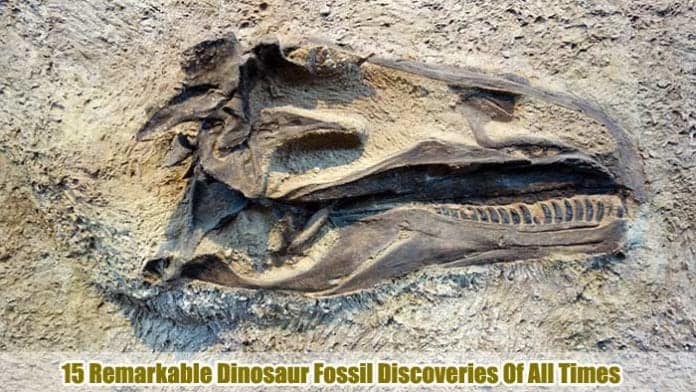
Dinosaur Fossil: Dinosaur is perhaps one of the most amazing creatures that ruled over the planet for more than 160 million years. Ranging from the size of hummingbirds to the size of large trucks and buildings, these ferocious “lizards” once battled for dominance but went extinct because of a still unknown cause.
Dinosaurs have gone extinct, but much information about them remains because of their fossils. Fossils don’t quickly degrade or decompose; hence they are a good source of evidence about prehistoric life on the planet.
In some instances, these fossils tend to be preserved in the most bizarre ways and the most unusual locations.
Many paleontologists have been digging and discovering these dinosaur fossils from various geographical locations as earliest as the 17th century till today. Excited to know them?
Table of Contents
- Dinosaur Fossil Discoveries
- 1. Femur of A Megalosaurus (1676) – England
- 2. Fossilized Dinosaur Feces (1811) – England
- 3. The “Missing Link” (1860) – Germany
- 4. Hadrosaurus (1868) – United States of America
- 5. Diplodocus (1878) – United States of America
- 6. Coelophysis (1881) – United States of America
- 7. An ongoing Combat Forever (1971) – Mongolia
- 8. Good Mother Lizard (1978) – United States of America
- 9. intact Plesiosaur Skeleton (1994) – North America
- 10. Another Plesiosaur Skeleton (2006) – Australia
- 11. The “Monster” (2006) – Norway
- 12. A Nest of 15 Baby Dinosaurs (2011) – Mongolia
- 13. A Mother Dinosaur Giving Birth (2011) – China
- 14. The Smallest Fossil (2011) – United Kingdom
- 15. Mosasaurus Fossil (2015) – Japan
Dinosaur Fossil Discoveries
The 15 most stunning and remarkable dinosaur fossil discoveries are listed in chronological order starting from the earliest.
1. Femur of A Megalosaurus (1676) – England
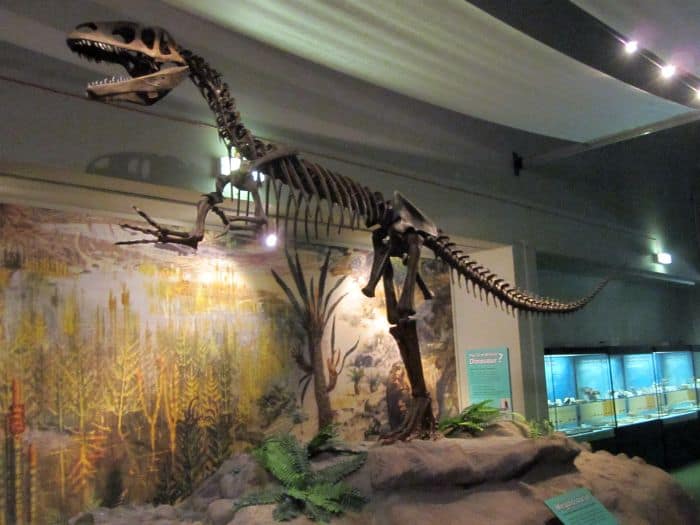
- One hundred and fifty years later, scientist William Buckland finally classified this fossil under the genus name Megalosaurus.
- In honor of William Buckland, this creature was assigned under the scientific name Megalosaurus bucklandii.
- However, it took more than 20 years for a paleontologist named Richard Owen to identify the fossil as a dinosaur exclusively.
![]()
2. Fossilized Dinosaur Feces (1811) – England
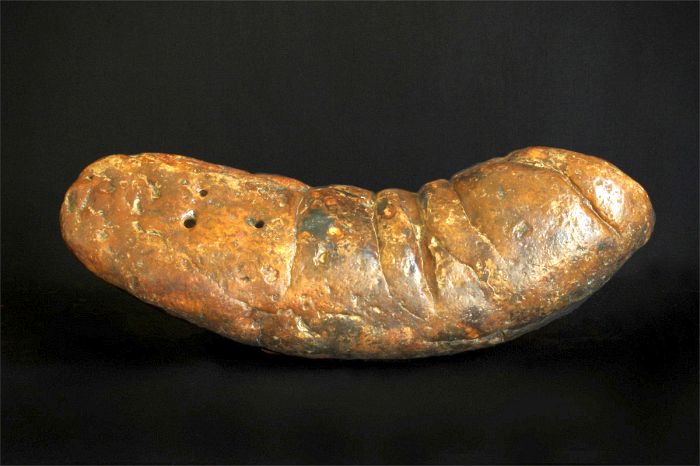
Also called coprolites, fossilized dinosaur feces were first discovered and coined during the early 20th century.
- It was when the 12-year-old Mary Anning noticed some weird stones inside the abdomen of the ichthyosaur fossils she was collecting that she found out these were fecal matter!
- Beyond its bizarreness, these coprolites serve as tremendous fossils that help scientists to decipher what type of food extinct dinosaurs ate.
- Specifically, in Australia, these coprolites revealed that plesiosaurs that lived during the Cretaceous period were bottom feeders.
![]()
3. The “Missing Link” (1860) – Germany
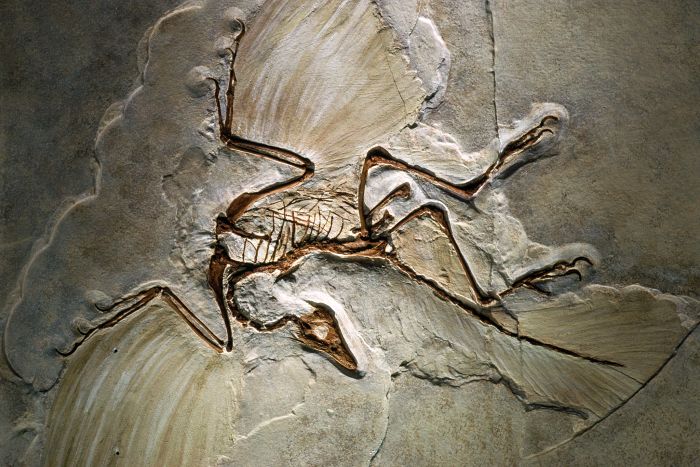
- For scientists, this organism had characteristics of both birds and dinosaurs. This organism is considered by many as the oldest known bird, assumed to lived during the Late Jurassic period.
- The name “Archeopteryx” comes from the Greek words “archaios” and “pteryx” meaning “ancient” and “feather” respectively.
- This discovery of the Archeopteryx has led to more discoveries of other transitional organisms; however, none have had the same remarkable impact as this organism.
![]()
4. Hadrosaurus (1868) – United States of America
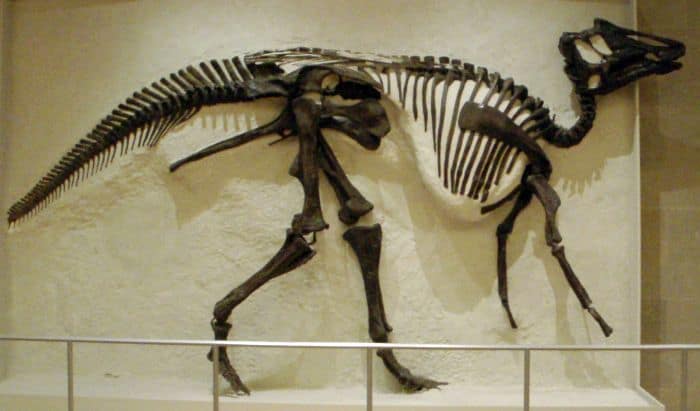
Named by Joseph Leidy, an American paleontologist, the Hadrosaurus[4] is a species of duck-billed dinosaurs that lived in the forests and freshwaters of North America.
- Historically, this fossil excavated was considered the first ever (nearly) complete dinosaur fossils in the United States and probably the complete one to be discovered anywhere in the world.
- The first fossil of this dinosaur was discovered and scientifically documented in 1868.
- During Leidy’s time, this dinosaur was thought to walk in a tripod (much like a kangaroo position); however, modern studies about these dinosaurs reveal that they walk upright.
![]()
5. Diplodocus (1878) – United States of America
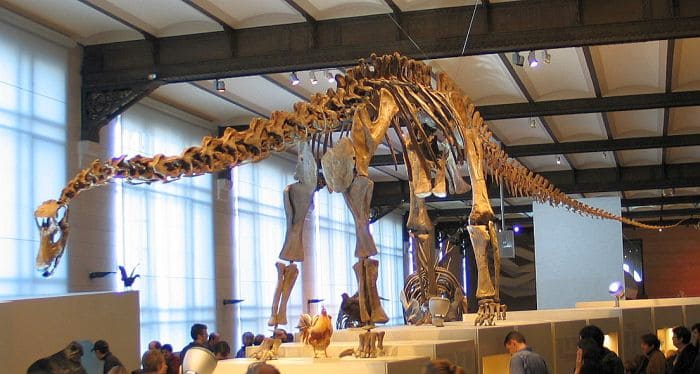
- Among all the fossils of Diplodocus unearthed, the species D. hallorum was the longest, with 33 meters long overall skeleton.
- In 1878, the first skeleton of Diplodocus was discovered at Como Bluff, Wyoming by scientists Benjamin Mudge and Samuel Wendell Williston.
- The remains of this dinosaur species are prevalent, except for their skulls, which are often not found with the overall body skeleton.
![]()
6. Coelophysis (1881) – United States of America
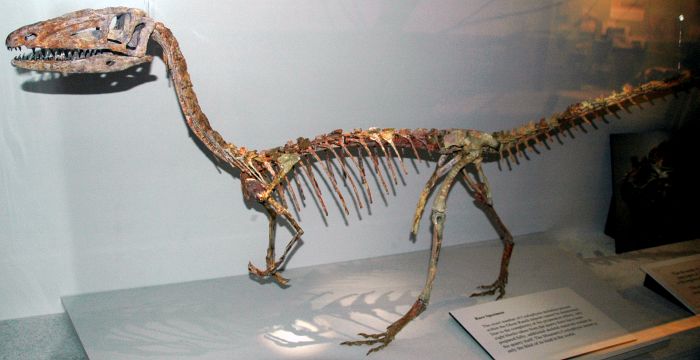
- Based on their fossilized stomachs containing small reptiles, fish, and other bones of Coelophysis, scientists concluded that this species was a carnivorous cannibal.
- The name of this dinosaur came from the Greek words “koilos” and “physis” which mean “hollow” and “condition” respectively.
- Although this fossil does not necessarily make a hit among paleontologists, its discovery revealed that flash floods usually drown most dinosaurs that travel and live in large groups.
![]()
7. An ongoing Combat Forever (1971) – Mongolia
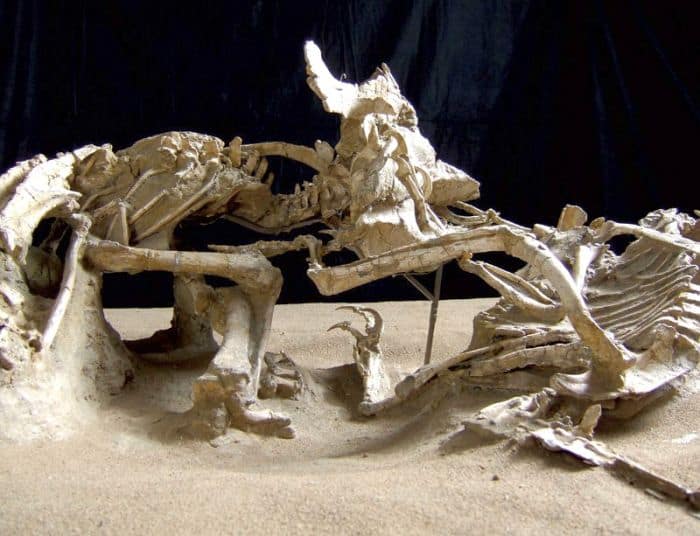
Another fantastic fossil discovery was the ‘ongoing fossilized combat‘ between a carnivorous Velociraptor and an herbivorous Protoceratops – direct evidence of how rampant predation among dinosaurs was during that time.
- In the fossil, the Protoceratops was hit at its carotid artery by the Velociraptor’s claw. The Protoceratops fought back and locked its jaws on the arms of the Velociraptor’.
- Scientists believe that while these dinosaurs were fighting for their lives, a large land mass (presumed to be a sand dune) suddenly collapsed on them.
- This fossilized combat[7] between the two dinosaurs was unearthed in the Gobi desert, Mongolia, in 1971.
![]()
8. Good Mother Lizard (1978) – United States of America
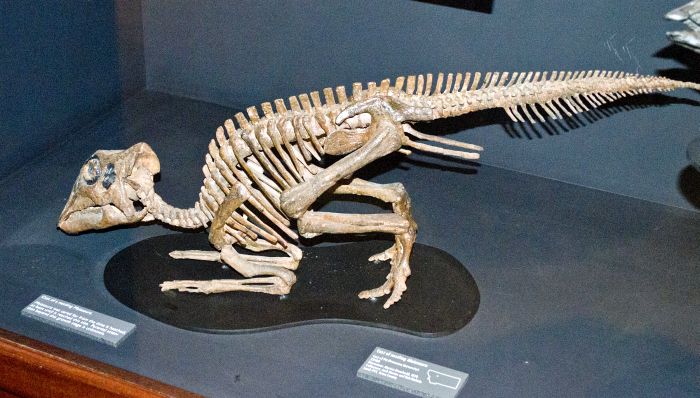
- The fossils accurately revealed the growth rate, metabolism, sexual maturity, and physical maturity.
- The fossils of the Maiasaura also serve as important evidence that dinosaurs once had an interactive family life. The fossils also show that they don’t usually abandon their young when hatched.
- Fossils of this dinosaur were first excavated from a bone bed in western Montana in the early 1990s.
![]()
9. intact Plesiosaur Skeleton (1994) – North America
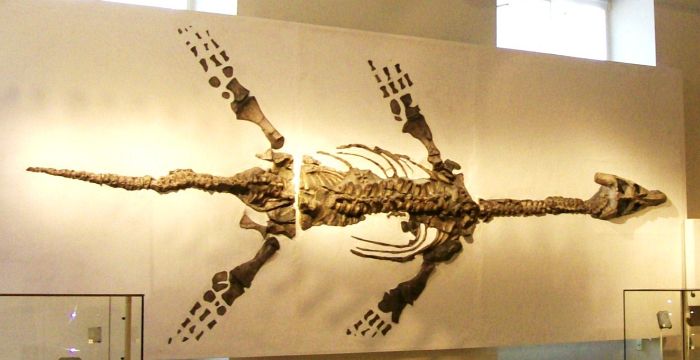
Plesiosaurs are carnivorous dinosaurs that ruled the vast oceans and seas during the prehistoric period. In particular, one plesiosaur fossil of the species known as the Nichollsia Borealis was discovered in North America in 1994.
- The fossil was still intact, and the whole body was completely preserved, making it one of the oldest and one of the complete fossils ever discovered.
- This fossil was discovered in a 200 feet deep surface mine in Alberta.
- This fossil now represents the amazing marine life in North American prehistory.
![]()
10. Another Plesiosaur Skeleton (2006) – Australia
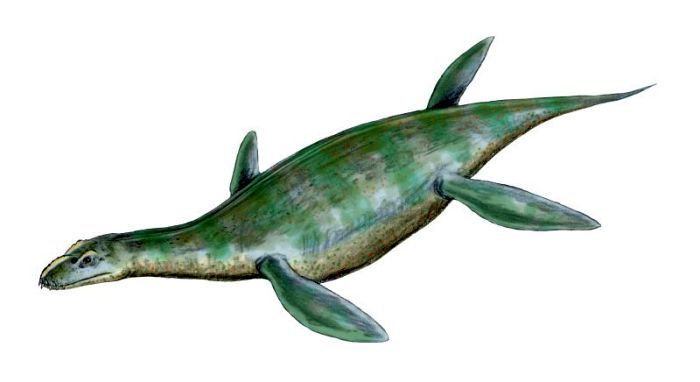
- This organism derived its name from “Umoona“, an Aboriginal name for the specific region in South Australia where almost all Umoonasaurus fossils were discovered.
- Umoonasaurus fossils are spectacular due to their bright blue overall green skeleton.
- The discovery of this dinosaur paved the way for scientists to conclude that adults of this species tend to return to the shallow inland waters to raise their young.
- Scientists also found that they might have developed specific mechanisms to cope with the harsh environmental condition.
![]()
11. The “Monster” (2006) – Norway
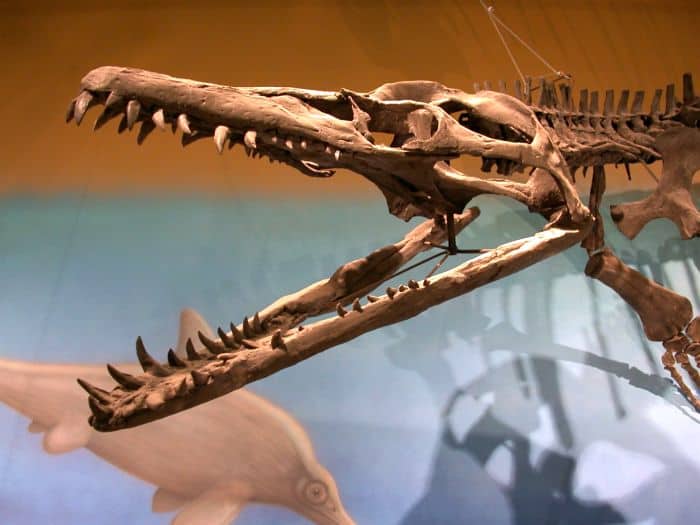
Another group of marine reptiles that ruled over the prehistoric period were the pliosaurs. In particular, a 33-foot fossil of a pliosaur dubbed as the Monster[11] was discovered on the Arctic island of Spitsbergen in Norway’s Svalbard archipelago.
- This 150-year-old fossil was the largest and most complete pliosaur fossil ever discovered.
- The unearthed fossil includes a skull measuring 2.1 meters and enormous teeth the size of cucumbers.
- Pliosaurs were typically short-necked and had powerful flippers that helped them propel themselves in water.
![]()
12. A Nest of 15 Baby Dinosaurs (2011) – Mongolia
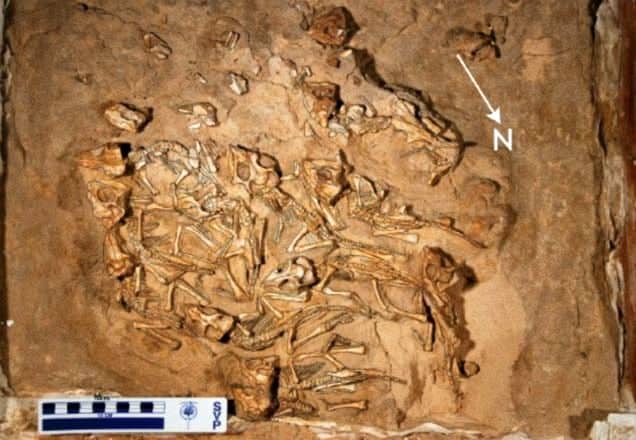
- Fastovsky said that sand dunes might have overrun this nest during a storm, hence burying them all alive.
- This discovery of the nest provides the first evidence that young dinosaurs of this species stay in nests for an extended period.
- Chemical analyses revealed that all 15 dinosaurs were relatively the same size and at the same period of physical and sexual maturity, hence suggesting that they were infants from the same mother.
![]()
13. A Mother Dinosaur Giving Birth (2011) – China
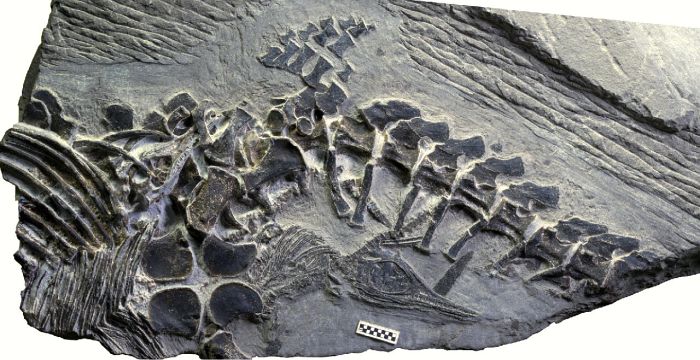
The next dinosaur fossils in our list are the 248-million-year-old fossil of a female ichthyosaur giving birth to three offspring, which was recently discovered in South Majiashan, China last 2011.
- The fossil includes the mother dinosaur who is giving birth to (1) an offspring that is halfway out of the birth canal, (2) one already found outside, and (3) one waiting to be born.
- Despite this, ichthyosaurs were only discovered in 2012.
- Reptiles are known to be egg-laying creatures, but the discovery of this ichthyosaur somehow confuses scientists’ views about the evolution of live-bearing.
![]()
14. The Smallest Fossil (2011) – United Kingdom
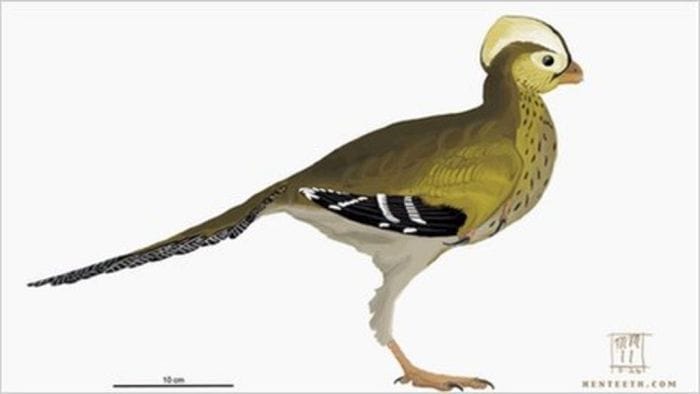
Just about the size of bread (40 centimeters), the “Ashdown Maniraptoran” fossil is now considered as the smallest dinosaur fossil ever found (yet).
- Recently discovered in 2011 in the United Kingdom, this fossil rivals the Anchiornis genus, which was previously known as the smallest dinosaur.
- At present, the skull of this fossil is yet to be found; hence, its type of diet is still unknown.
- Although most non-avian taxa of this clade have gone extinct during the late Mesozoic, other Maniraptoran species, including birds and other closely related species, still exist up until today.
![]()
15. Mosasaurus Fossil (2015) – Japan
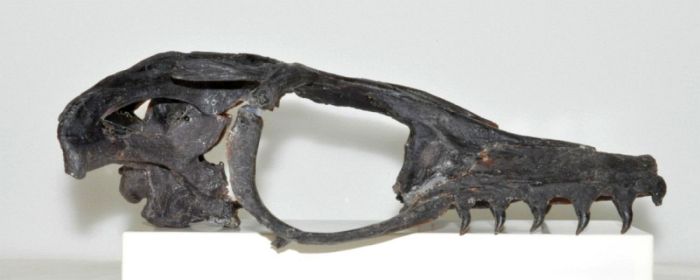
Last but not the least dinosaur fossil in this list belonged to the marine reptile named Mosasaurus. Before its discovery, scientists had long dug up lakes and rivers in central and western Europe.
- Previous fossils of the Mosasaurus have already been discovered along the East Coast of North America, the Pacific Coast of North America, Europe, and North Africa. However, this fossil found in Japan was the first to fill the gap between the Middle East and the Eastern Pacific.
- The fossil was well-preserved; the analysis revealed that this creature had binocular vision.
- Interestingly, the skeleton of the Mesosaurus was the first ever fossil to be identified as extinct.
![]()



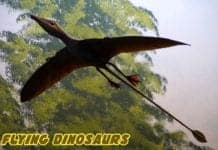
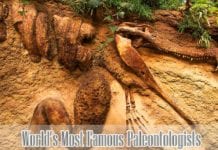










I find it fascinating fossils I’m 63 years old I have been collecting gems and fossils for many years I have right now a lizard and totally fossilized found in New Hampshire the mother just laid her egg she’s huddled around her eggs I it shows the nést and the eggs all fossilized beautifully. You can see where the mother had killed a baby lizard, so they had something to eat when they were born apparently they died just after laying eggs it is a beautiful specimen, but I must sell it if anybody is interested please let me know it’s a sad moment in my life it is a beautiful specimen should be in a museum it is one of a kind my prize possession besides my children LOL LOL.
It has not yet been carbonated, but I know it is one of a kind, and one-of-a-kind things come with a one-of-a-kind price. Be the one to own the only one-of-a-kind fossil lizard laying on her nest of eggs, the only one in the world; it is a pretty neat feeling, actually LOL.
Hello I like fossils
Sweet article on some really cool dinosaur fossils. The Diplodocus looks really interesting, and it’s interesting to learn that the skull usually isn’t found with the rest of the skeleton. I’m kind of curious to learn why this is, and how people know what to look for when trying to find the skull.